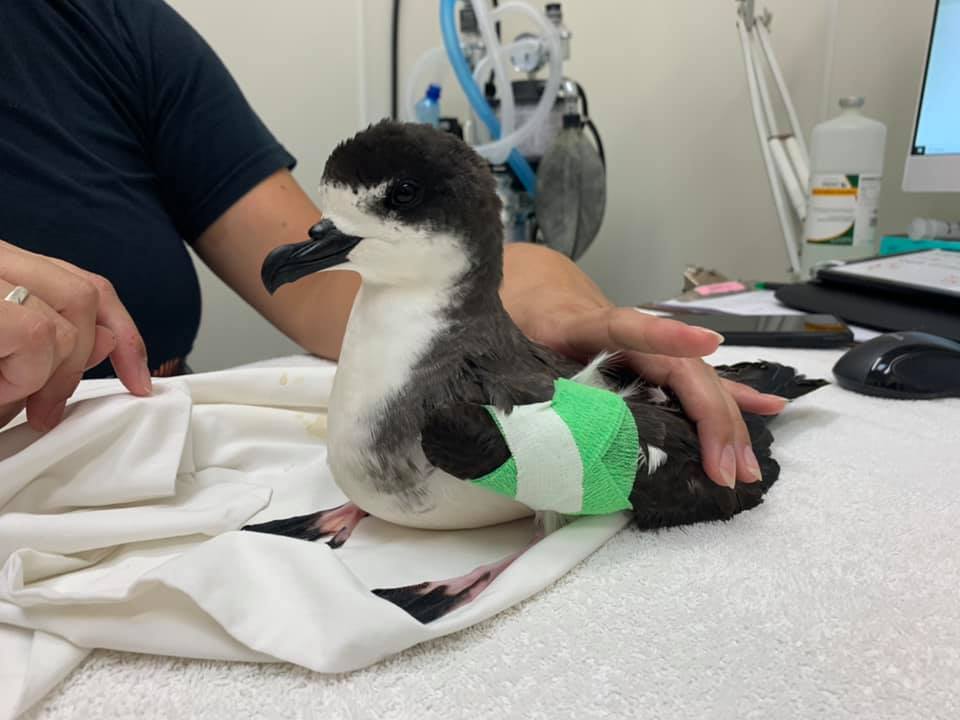
Hawaiian Petrel with a broken wing under care, possibly from a powerline collision; photograph by the Hawaii Wildlife Center
Marc Travers (Archipelago Research and Conservation, Kauai, Hawaii, USA) and colleagues have published in the open-access electronic journal Avian Conservation and Ecology on powerline collisions by Hawaiian Petrels Pterodroma sandwichensis (globally Endangered) and Newell's Shearwaters Puffinus newelli (globally Critically Endangered).
The paper’s abstract follows:
Powerline collisions have been identified on Kaua'i as a potential contributing factor to the large-scale decline of both Hawaiian Petrel (Pterodroma sandwichensis) and Newell's Shearwater (Puffinus newelli), but the scale of the powerline collision problem is unknown. From 2012 to 2020 we conducted observations for seabird powerline collisions across Kaua'i, documented grounded seabirds, and assessed crippling and environmental biases - both poorly studied facets of powerline collision research. We directly observed 121 powerline collisions and detected 89 grounded seabirds. While some collisions resulted in birds falling lifelessly out of the sky, most resulted in seabirds flying or gliding outside of the search area. This means that traditional ground searches would underestimate total collisions by 78-88% if not accounting for crippling bias. We tested environmental bias by comparing our ability to conduct searches for grounded birds, "searchability", across multiple variables. Environmental bias resulted in significant reductions in searchability across regions, environment types, and powerline heights. Furthermore, observed collision rates were significantly higher at powerlines that had very low to zero searchability. Forty-three percent of observed collisions occurred at unsearchable powerlines (mainly spanning steep valleys), equating to an estimated 3170 seabird collisions that could not be detected through ground searches. We detected powerline collisions in every region of Kaua'i, in every environment type, and at all powerline heights monitored. Our results show that crippling bias and environmental bias are the mechanisms that concealed the geographic distribution of collisions and the scale of the powerline problem from grounded bird searches, ultimately preventing the detection of thousands of collisions. The data collected for this study are critical for assessing the scale of seabird powerline collisions and quantifying the biases inherent in traditional ground searches.”.
Reference:
Travers, M.S., Driskill, S., Stemen, A., Geelhoed, T., Golden, D., Koike, S., Shipley, A.A., Moon, H., Anderson, T., Bache, M. & Raine, A.F. 2021. Post-collision impacts, crippling bias, and environmental bias in a study of Newell's Shearwater and Hawaiian Petrel powerline collisions. Avian Conservation and Ecology 16(1):15. doi.org/10.5751/ACE-01841-160115.
John Cooper, ACAP Information Officer, 13 May 2021

 Español
Español  English
English  Français
Français